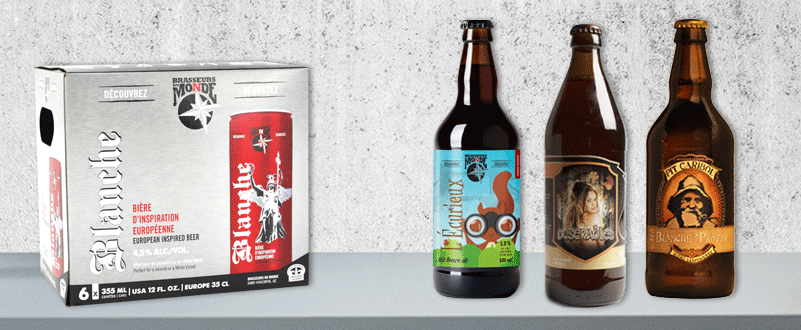This dynamic and flourishing industry is a real breath of fresh air blowing across Quebec.
Yet despite the many job creations and the goods made from this industry in the Quebec economy, the challenges remain numerous.
However, politicians, governments, governing bodies and the Association of microbreweries are slow to provide solutions and framing, however simple and unanimously demanded.
Examples:
- Why doesn’t the SAQ have a formal obligation in its mission to promote microbrewery products of Quebec?
- Why doesn’t Recycle Québec make the weight criteria for can labels more flexible? Who and why does it bother? This attitude jeopardizes the profitability of microbreweries which have chosen this ecological container to market their products.
- Why doesn’t Recycle Québec impose a specific washing framework for 500ml bottles labeled with self-adhesive labels? This bottle is a very good container which offers criteria of distinction to the microbreweries that use it. For more than 5 years the solutions have been on the table and clearly identified, but nobody seems to want to put the dots on the i ’i’ ’and the bars on the‘ ’t’ ’and finally make decisions.
This circumstantial problem is however so simple to solve;
1) Use one of the 2 self-adhesive papers which perform best and which have already been identified.
2) Have more frequent washing periods to ensure that the self-adhesive labels are not stuck on the glass for more than 12 months.
To try to solve the problem, bad solutions were required by the bottle washer. For example, it was asked not to use paper with little water resistance.
Result; most microbreweries that use this type of label for 500ml bottles have pleated labels once on the refrigerated shelves of specialty outlets caused by thermal shock. Their brand images are reduced and greatly mortgaged.
Facts and Truths:
No self-adhesive label produced on washable paper and which has been stuck on a bottle for
more than 12 months will be able to wash effectively.
- Why?
The glue (even wash away glue) changes over time and becomes permanent after being glued for more than 12 months on the glass. - The more a bottle has been washed, the more porous the glass becomes. The porosity increases the adhesion of the glue. The fleet of 500ml bottles is very polluted and older than the fleet of 341ml.
- Unlike a cold glue label whose glue occupies 50% of the surface, the adhesive of a self-adhesive label occupies 100% of the surface.
- Cycle time. A 500ml bottle takes on average between 4 and 6 months between its labeling and its return to the microbrewery. Then, the bottles are accumulated because the only bottle washer requires minimum quantities before washing. So crucial questions arise: Under what conditions are the bottles stored? (Outdoors in a container all year round or in a temperate warehouse)
There are only 2 papers on the North American market that offer very good yields for printing and making self-adhesive labels that wash 100% under certain conditions.
However, the two papers which perform best and which are available on the North American market require that the bottles be washed before 12 months after being glued.
It is therefore essential that the leaders of the reference organizations impose precise frameworks on all stakeholders (washers and microbreweries); guidelines to reduce the waiting time between each wash.
Happy year 2017!
Sylvain Major
President

